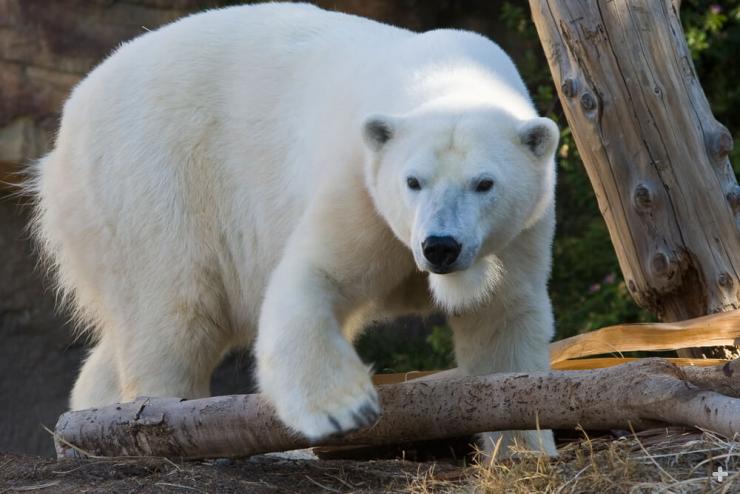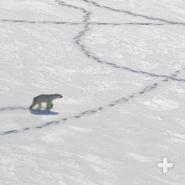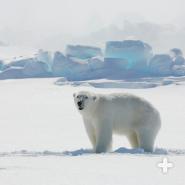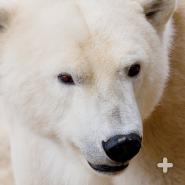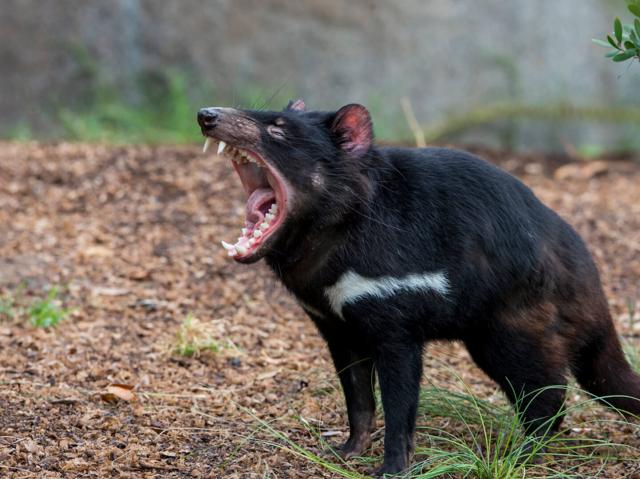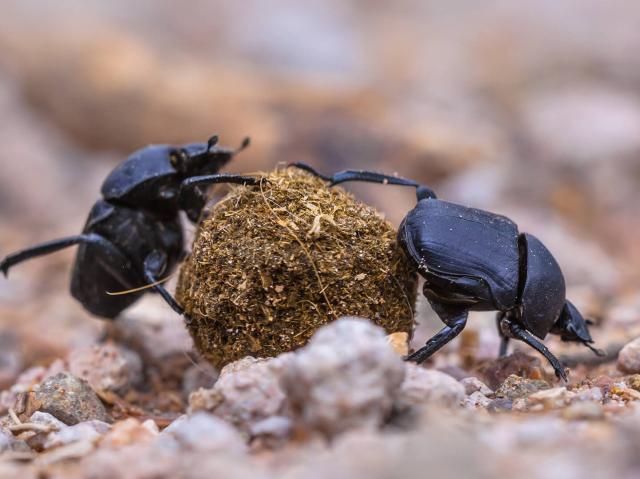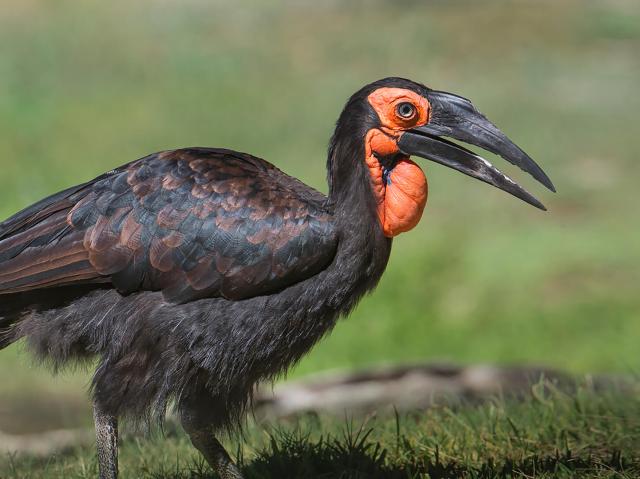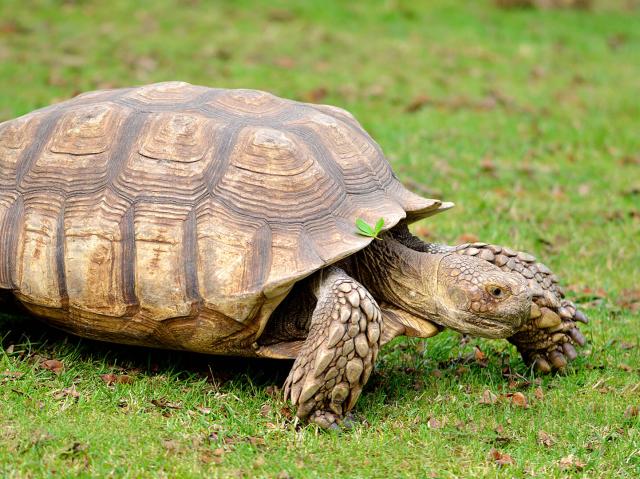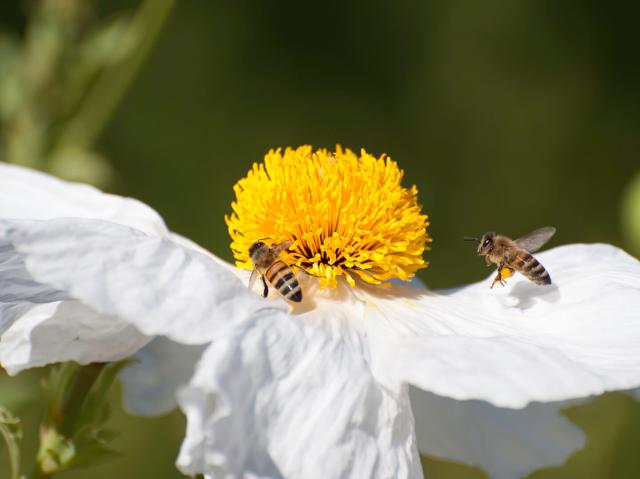
Polar Bear

- CLASS: Mammalia (Mammals)
- ORDER: Carnivora
- FAMILY: Ursidae
- GENUS: Ursus
- SPECIES: maritimus

ABOUT
Perhaps no other wildlife symbolizes the frozen tundra regions of the Earth better than polar bears. They live on ice and snow, but that’s not a problem—these bears have some cool ways to stay warm!
An outer coat of long guard hairs that stick together when wet protects a dense, thick undercoat of fur. On land, water rolls right off the guard hairs. Even though polar bears look white, their hair is really made of clear, hollow tubes filled with air. Oils from their diet, oxidation from the sun, or residue on their fur can cause their “white” fur to appear cream colored or yellow.
When food is scarce, a polar bear's fat provides backup energy. It may also help insulate their bodies, generate heat in the freezing temperatures, and keep them afloat in water. Their fat can be 2 to 4 inches (5 to 10 centimeters) thick.
Unlike brown bears and black bears, polar bears do not hibernate, and only pregnant females over-winter in dens. While in their den, a pregnant female’s activity level decreases and her metabolism slows down. During this period, she gives birth and nurses her cubs. Sometimes, when weather conditions are particularly rough, other bears may dig temporary shelters, where they spend several days at a time.
Polar bears are the newest of the eight bear species. Scientists believe that they evolved about 200,000 years ago from brown bear ancestors. Both polar bears and brown bears are big and are the largest land carnivores. But most experts agree that polar bears are the longest bears, as males may measure over 12 feet (3.7 meters) when standing on their hind legs.
Polar bears spend their days hunting and sleeping after a good meal. For some, these meals need to last them during the upcoming months when the Arctic ice has melted, and they are forced to spend their days on land waiting for the fall cold to once again form ice. Small bumps on the pads of their large, wide paws may add traction and help them walk on slippery ice.
When not hunting, polar bears rest, sometimes as much as 20 hours a day. Polar bears are great bed makers, building nest-like beds in seaweed piled up on the coast, digging deep caves of snow into the bluffs, or resting in a shallow snow bed and letting the blowing snow cover them, making for a snug day den.
HABITAT AND DIET
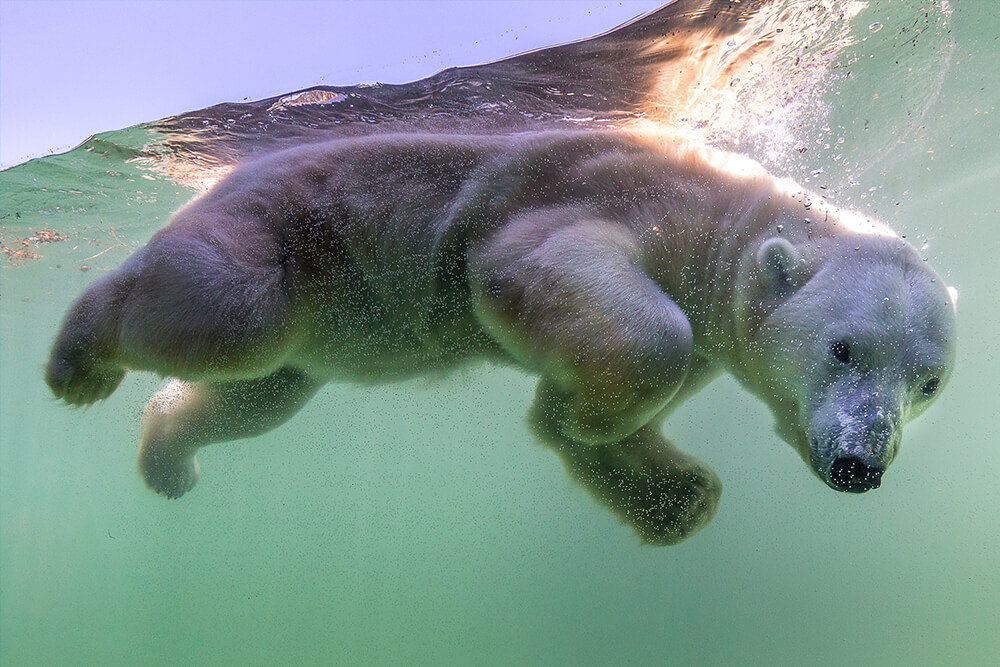
Polar bears live throughout the Arctic, in areas where they can hunt seals in wide cracks in the sea ice or at breathing holes. The taxonomic name for polar bears is Ursus maritimus, which means sea bear, a fitting name for these marine mammals and adapted swimmers. They have been known to swim more than 60 miles (about 100 kilometers) without rest in search of food, using their broad front feet for paddling and their back legs like rudders to steer. Unfortunately, due to loss of sea ice, polar bears now must swim longer distances, as much as a few hundred miles, which takes a toll on their energy and fat storage.
Despite the long, harsh winter, polar bears don’t hibernate. In fact, most of them (except pregnant females) continue to hunt seals throughout the winter. When the weather is extremely cold, and hunting is impossible, bears may seek temporary shelter in snow dens until conditions improve.
A pregnant female stays in a snow den throughout her pregnancy, the birth of her cubs, and the first few months of the cubs’ life, without leaving the den. Changes in her metabolism allow her to go without food, water, defecation, or urination for as long as eight months. For most mammals, fasting during pregnancy would be life threatening, but a female bear gains a massive amount of weight before she dens. Her stored fat reserves provide all the energy she needs to sustain herself and her cubs. Still, she wakes easily. This process is called winter sleep.
Polar bears have no natural enemies. Strong, ferocious, intelligent, and patient hunters, they top the food chain in the Arctic, where they dine primarily on seals. Polar bears can remain motionless for hours above a seal's breathing hole in the ice, just waiting for a seal to pop up. A polar bear's nose is so powerful it can smell a seal on the ice 20 miles (32 kilometers) away, sniff out a seal's den that has been covered with snow, and even find a seal's air hole in the ice up to 1 mile (1.6 kilometers) away. No wonder many people call them "noses with legs!"
Polar bears can see well underwater, spotting potential meals 15 feet (4.6 meters) away. They have a nictitating membrane, or third eyelid, that allows them to see underwater and protects their eyes in blowing snow.
Stiff fur on the sole of each foot keeps polar bears from slipping on the ice. It also muffles the sound of the bear’s approach when sneaking up on a sleeping seal. It costs a polar bear twice as much energy as most other mammals to move about in its Arctic environment. This helps explain their preference for resting frequently and hunting for seals using sit-and-wait tactics rather than chasing their prey.
Ringed seals are a polar bear’s main prey, as they are the most common seal in the Arctic. One ringed seal provides a polar bear with enough energy for 11 days. Polar bears typically eat every four to five days. These bears eat just about anything, if they have the opportunity, but it is important to remember that they need access to the high-calorie diet that seals provide. While they will eat walrus, caribou, beached whales, grass, and seaweed, none of these have been shown to provide adequate and reliable nutrition for polar bears.
Polar bears at the San Diego Zoo eat meat and fish, and occasional vegetables. While their main diet consists of meat and fish, eating vegetables like whole carrots or chewing on bones helps keep their teeth clean.
FAMILY LIFE
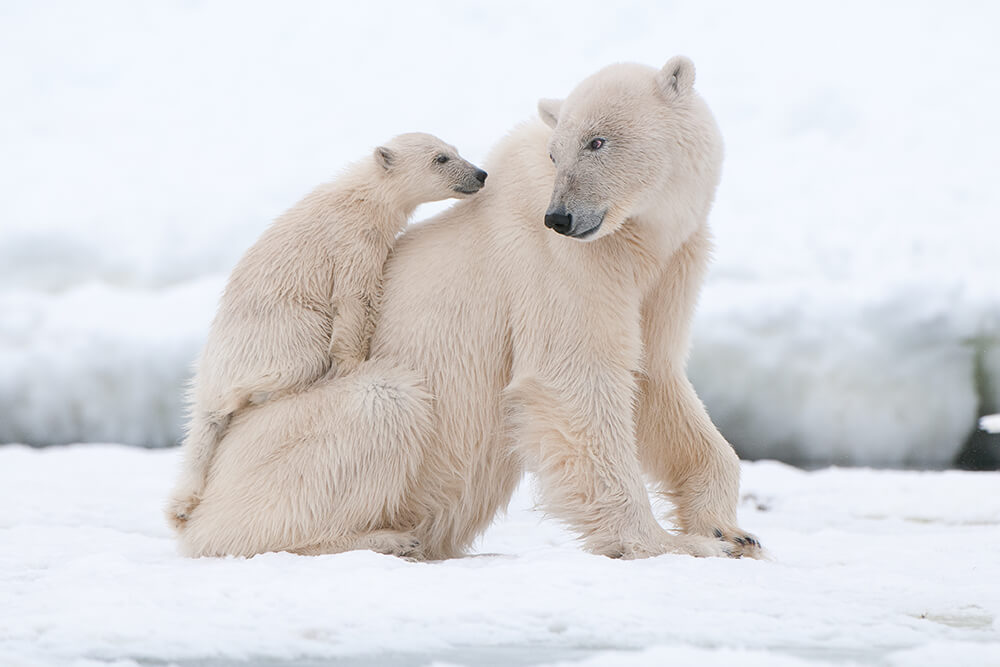
Polar bears are highly intelligent and playful. Two or more bears sometimes form “friendships” that last for weeks or even years. These bears wrestle as a form of play and may also eat and travel together. Individual polar bears have been observed sliding repeatedly downhill or across ice for no apparent reason other than just for the fun of it!
Polar bears are fairly quiet. Females and cubs in the den make a pulsating hum. These calls are most frequent in a cub’s first few months. Young bears also make a chuffing call to each other, which is infrequent in adult bears.
Except for females with cubs, polar bears are solitary. Sometimes several bears scavenge together at a whale carcass or human garbage dump. Dominance is based on size, but for the most part, each individual behaves independently. Polar bears have large, overlapping home ranges and are faithful to general geographic regions, but they don’t defend territories.
Each spring, beginning in about March, adult males begin to search for mates. Incredible as it may seem, conservation scientists suspect that males detect the scent of a female in the footprints she makes in the snow! Once a male finds a receptive female, the two bears remain together for about two weeks.
A fertilized polar bear egg doesn’t implant or develop right away. Instead, it implants when triggered by the female’s body condition and environmental factors, most often between September and November. This is known as delayed implantation, an adaptation that ensures cubs will be born to healthy mothers at a time of year when their chances for survival are greatest.
Breeding season for polar bears goes from about March to mid-July. A pregnant female digs a maternity den, usually into a snowbank, in October or November. The den is often no bigger than a telephone booth, but it can be about 40 degrees warmer in there. The mother gives birth to one to three cubs, usually twins, in December or January.
For such a large species, they sure start out small! Cubs weigh just over a pound (0.5 kilograms) when born and are hairless and have their eyes closed at birth. They depend on their mother to keep them warm and fed. Milk from polar bear mothers is 36 percent fat, the richest milk of any bear species. This helps the cubs grow quickly, and by April, they weigh more than 20 pounds (9 kilograms) and start exploring with their mother outside the den. At about two years of age, they are ready to be on their own.
AT THE ZOO
The San Diego Zoo first began caring for polar bears in 1917. Shortly after, a gift from Ellen Browning Scripps launched construction of innovative, naturalistic habitats, and by 1926, a new polar bear habitat was complete. The habitat's revolutionary design offered amazed visitors close and unobstructed views of three polar bears.
Today, polar bears at the San Diego Zoo live in tundra habitats at Conrad Prebys Polar Bear Plunge. From the underwater viewing room, you can see how agile and playful these strong swimmers really are. Outdoor viewing follows the water level up to the beach area, where bears often dig around or take a nap—just like they would in the Arctic. Then, at the Experience Wall, visitors can watch up-close as wildlife care specialists care for polar bears through a mesh opening designed for interactions.
Our hope is that by experiencing polar bears, their lifestyle, and the conservation challenges they face, Zoo visitors will become more aware of the impact of their daily choices and empowered to make changes that will benefit them and wildlife around the world.
CONSERVATION
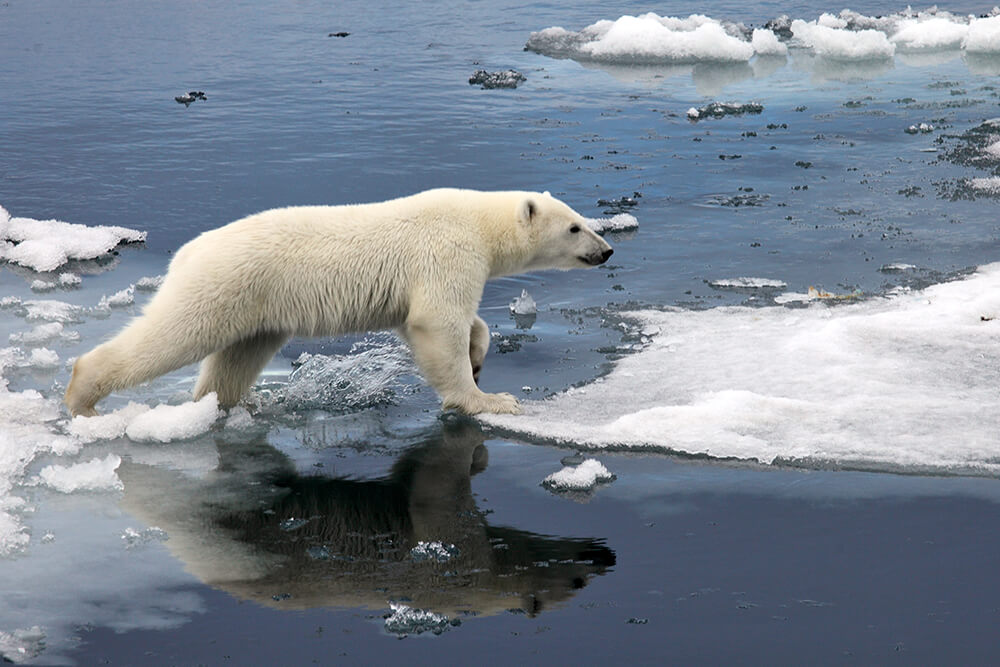
Polar bears are uniquely adapted to life on the sea ice of the Arctic Ocean, and for millennia they have roamed the vast and pristine circumpolar Arctic relatively undisturbed by people. However, climate change has created a conservation crisis for polar bears, and their persistence is jeopardized by record-breaking sea ice losses and increasing industrial-scale development. In areas where the sea ice melts completely, polar bears must move ashore in the summer. They may scavenge to avoid starving, or they may fast until ice forms again. In some places, bears have learned to eat at garbage dumps. There, they could be injured or poisoned by trash, and it puts bears in close contact with people. This can be a dangerous situation for both people and bears.
For decades, San Diego Zoo Wildlife Alliance's conservation scientists and our U.S. and Canadian partners have focused on developing the best conservation strategies for polar bear populations. Every detail matters: reproduction, denning, communication, available prey, formation of sea ice, climate change, and the impact of people are all evaluated.
As conservation scientists learn about the impact of people near polar bear denning sites (where mothers give birth and nurture their cubs), the polar bears we care for at the San Diego Zoo are contributing helpful insights. By signaling when they can hear sounds, polar bears at the Zoo have helped us determine their hearing ranges. This informs guidelines for protecting polar bears in their native habitats from noise disturbances—especially near denning sites.
To further understand the needs of polar bears in the wild, we're comparing the movements of one of the polar bears we care for to those in the wild with the help of accelerometers. The data gained from accelerometers will provide U.S. Geological Survey scientists with new insights into the bears' daily behavior, movements, and energy needs, and a better understanding of the effects of climate change on polar bears.
Today, conservation scientists estimate that about 26,000 polar bears remain in the Arctic. To protect their future, polar bears need our help. Safeguarding polar bear habitat and reducing the rate of climate change are essential to saving the future of these incredible bears.
By joining San Diego Zoo Wildlife Alliance as an ally for wildlife, you help save species worldwide.
Sounds
LIFE SPAN
On average: Females 20–25 years; males 15–18 years
YOUNG
Gestation: With delayed implantation, pregnancy can last 6.5 to 7.1 months; actual fetal gestation is about 60 days
Number of young at birth: 1 to 3; most commonly 2
Weight at birth: Just over a pound (.5 kilograms)
Age of maturity: Females 3 to 4 years; males 6 years
SIZE
Length (head and body): most are about 6 to 9 feet (1.8 to 2.7 meters)
Height: most are close to about 5.6 feet (1.7 meters) at the shoulder
Weight: females, most are 330 to 550 pounds (150 to 250 kilograms), but pregnant females may weigh more than 1,000 pounds (453 kilograms) before denning; males, most are 660 to 1,400 pounds (300 to 635 kilograms), but one enormous polar bear on record weighed more than 1,700 pounds (770 kilograms)
FUN FACTS
To clean their fur, polar bears roll in the snow.
Built to stay warm in their cold habitat, polar bears sometimes overheat and have to cool off in the chilly water.
A polar bear can swim at a speed of up to 6 miles per hour (8 knots).


